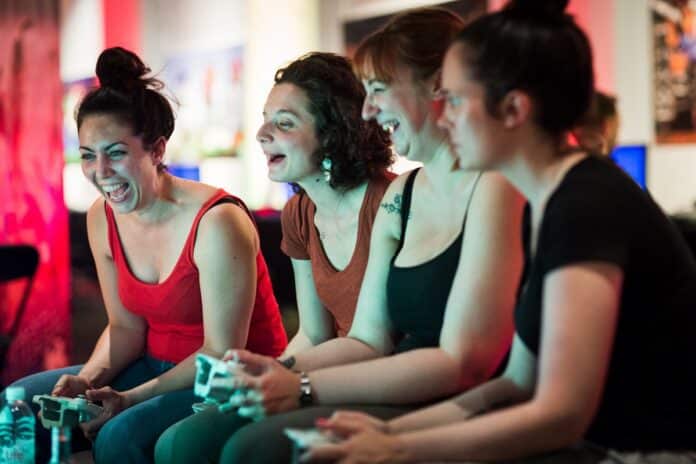This Women’s Day, a lot is different: the role of women – at work and at play – has been fundamentally transformed by a yearlong lockdown that might not lift for months to come.The implications are tremendous: India’s female workforce participation rate, of just 27 percent, is one of the lowest in the entire world. Key reasons that arise time and again for this are safety, availability of transport, and adequate childcare facilities.
Work from home makes these factors effectively redundant: today’s Indian working woman can play any role she wants, straight from home, without hitting economic and social roadblocks that would’ve taken her out of the workforce.
Women are working harder than ever. But, as it turns out, they’re gaming more too. 2020 and 2021 have been years of incredible growth for mobile gaming in general. The reasons for this are obvious: the pandemic and lockdowns have forced people indoors, with hours upon hours of free time.
The numbers speak for themselves: this year, people around the world download over 218 billion apps. That’s nearly 40 apps per person, enough to fill your home screen several times over. And many of these downloads were games. All types of games, from core genres to casual gaming recording a significant uptick in usage time over the past year. The gaming market, on the whole, is now worth over $120 billion.
The demographics – just who are out there playing these games is equally surprising. As of 2020, 51 percent of all mobile gamers were women. This number flies in the face of the typical male gamer stereotypes. How are women engaging with games and what are the implications for the industry on a whole? Let’s take a look:
Longer sessions point to more involved gameplay
MMA Global research indicates that women spend 25 percent longer than men on average per mobile gaming session. A larger time commitment means women place a greater focus on compelling experiences, instead of looking at mobile games as a point A to point B diversion during commutes. What does this tell industry leaders? Women gamers look for deeper, more compelling gaming experiences – a move towards core gaming, or at least the adoption of core gaming mechanics in “casual” titles could help keep session times high.
Apple’s subscription-based Apple Arcade offers one possible example of how this plays out: Apple Arcade is full of deeper, core-gaming experiences on mobile that demand more user time, effort, and skill.
While the monetization model might not be the way to go for all publishers, the design approach devs take with Apple Arcade titles could translate well to the free-to-play casual space: filling out “casual” one-tap activities with questlines, voice acting, and meaning can keep women gamers engaged in the long run.
Higher spend means more IAP possibilities
On average, 4.5 percent of women spend money on games, compared to just 3.3 percent of men. This is a significantly higher number and it has implications for how in-app purchases and game monetization should be structured. The basic implication here is that more women are considerably invested in particular games – to the point of making a purchase – as compared to men. Marketers can tap into this opportunity by focusing on compelling and better-integrated free-to-play mechanics in games, such as in-app video. By offering compelling reasons to spend without upsetting core mechanics, publishers could benefit due to increased spend from committed women gamers.
Bring women representation to the forefront
This point cannot be stressed enough: there are more women gamers out there than men. And yet, women’s representation in games hasn’t advanced to the same extent. Women’s representation in-game continues to be influenced by the male gaze, from suggestive costumes to passive, supporting roles.
Many of the top multiplayer games out there, from Call of Duty: Mobile to PUBG, push male-centric themes and messaging – even when there’s the option to play with a female avatar, it’s a cosmetic change.
Publishers now have the opportunity to work on games that are built from the ground up for female audiences with empowered characters and women-centric themes. When more than half of your audience is women – including a higher proportion of paying customers – it makes economic sense apart from the responsibility aspect.
Women are here in the mobile gaming space, and they’re here to stay. Amid the global pandemic and lockdown, women mobile gamers, for the first time ever, make up the majority of the mobile gamer demographic. They spend more time on gaming sessions, and are more likely to spend on in-game purchases. It’s time for developers and publishers to wake up to the fact and address this key demographic.


